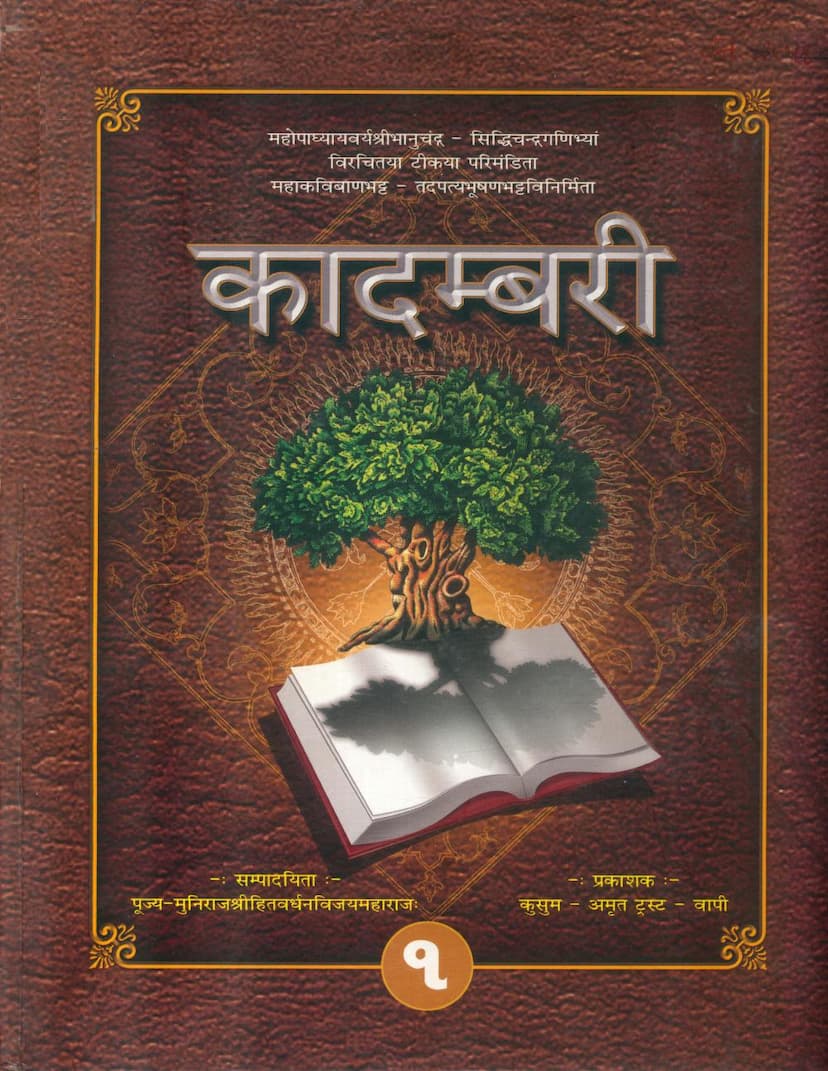Kadambari Part 01
Added to library: September 2, 2025

Summary
Here's a comprehensive summary of the provided Jain text, "Kadambari Part 01" by Hitvardhanvijay, published by Kusum Amrut Trust:
Overall Context:
This Jain text is a rendition or edition of the classic Sanskrit romance "Kadambari," originally composed by the great poet Banabhatta and completed by his son Bhushanabhatta. This particular edition is presented by Muni Hitvardhanvijay and published by Kusum Amrut Trust. The text includes a commentary (Tika) by the esteemed Jain scholars Mahopadhya Bhanuchandra Gani and Mahopadhya Siddhichandra Gani, who were contemporaries of Emperor Akbar.
Key Features and Content:
-
Commentary by Jain Scholars: The primary distinguishing feature of this edition is the inclusion of a detailed commentary by Mahopadhya Bhanuchandra Gani and Mahopadhya Siddhichandra Gani. This commentary is highly valued for its explanation of the complex Sanskrit language and literary devices used in the original Kadambari. The editors note that these scholars were highly respected and honored by Emperor Akbar.
-
Editorship: Muni Hitvardhanvijay is credited as the editor. His dedication to this scholarly work is evident, involving significant effort in the research, editing, and re-publication of this important text. He expresses gratitude to his gurus and others who supported the project.
-
Content of Kadambari: The text itself recounts the famous story of Kadambari. The provided pages primarily focus on the summary of the story (Kadambari Sar), outlining the narrative arc. This includes:
- King Shudrak and the Parrot Vaishampayan: The story begins with King Shudrak, who hears the life story of a parrot named Vaishampayan.
- Vaishampayan's Past Life and Reincarnation: Vaishampayan's narrative unfolds, detailing his previous life as a learned man who was cursed and reborn as a parrot.
- The Love Story of Chandrapida and Kadambari: The core of the story revolves around the prince Chandrapida, who falls in love with Kadambari, a princess from Gandharva lore.
- Tragic Events and Reunions: The narrative details their love, the separation caused by curses and unfortunate circumstances, the grief of Mahashweta (a friend of Kadambari), and eventual reunions and resolutions.
- The Role of Mahashweta and Pundarika: The tragic love story of Mahashweta and the Gandharva prince Pundarika is intertwined with Chandrapida and Kadambari's story.
- The Continuation of the Story: The summary touches upon the Uttarardha (latter half) of the Kadambari, suggesting the continuation of the plot.
-
Historical and Literary Significance: The introduction and meta-information highlight the significance of the Kadambari as a masterpiece of Sanskrit literature, particularly in prose. The commentary by the Jain monks adds a layer of scholarly analysis from a Jain philosophical and linguistic perspective.
-
Publisher and Publication Details: Kusum Amrut Trust, Vapi, has published this edition. Page 3 provides catalog details, including the original creation time of the work (mid-7th century CE), the time of the commentary (latter half of the 17th century Vikram era), and the publication details of this specific edition (2005 CE).
-
Jain Orientation: The title page and introductions contain blessings and salutations typical of Jain texts, such as "Jayatu Shravan Shasan" (Victory to the Jain tradition) and salutations to gurus and saints within the Jain lineage. The editorship by a Muni further emphasizes the Jain context of this edition.
In essence, this book is a valuable scholarly edition of the Kadambari, enriched by the insightful commentary of renowned Jain scholars, making the classic Sanskrit text accessible and comprehensible within a Jain academic and devotional framework.